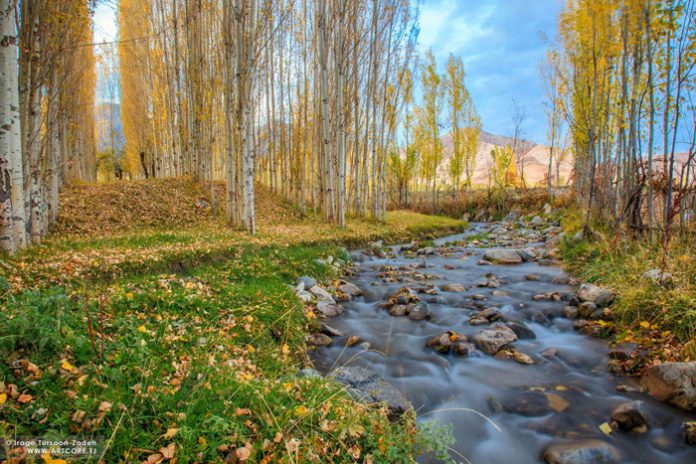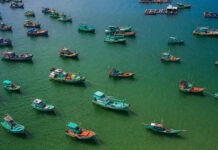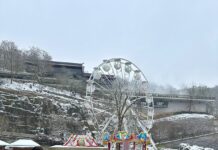Why would one want to travel to remote, landlocked Republic of Tajikistan? A question easily answered — it is indisputably a beautiful place on its own, it is also untrammeled by tourist hordes and untainted by aspects of modern commercialism. Travel to Tajikistan to meet the people, to experience their unique culture and to witness first-hand, traditions that have remained unchanged for hundreds of years. But perhaps more importantly, visit Tajikistan to experience the genuine warmth of friendship and hospitality, a tradition that has been afforded to visitors for centuries.

Tajikistan is exciting and it is the exact antithesis of your standard tour packages. There is nothing that can be taken for granted and one has to be prepared for the unexpected at any moment. This is what makes a trip to Tajikistan so exhilarating. The country is not easy to get to or travel around, but that only adds to the attraction. When you do manage to get there, you are rewarded with amazing vistas of barren landscapes, towering mountain ranges, placid blue lakes and paths carved from inhospitable terrain that pass for highways. Remote locations, dramatic backdrops and unique cultural experiences await intrepid travelers making their way through Tajikistan.

Geographically, Tajikistan is a landlocked nation in Central Asia, bordered in the south by Afghanistan, to the west by Uzbekistan to the north by Kyrgyzstan and to the east by China. A narrow extension of Afghanistan, the Wakhan Corridor separates the country from the northern tribal regions of Pakistan. The geography of the country means that as winter starts to come in the mountains get shut off by snow. There are a few vehicles that can get through and traveling around becomes a major undertaking. In summer cloudless skies and dry atmosphere means temperatures could go over 40C on most days.
The best time to travel to Tajikistan is from spring to early autumn. Spring carries with it a set of difficulties for getting round the country and trekking – the snow melt means usually a lot of flooding, high rivers and landslides – it is however the best time to see mountain meadows bedecked with flowers. Early autumn is perhaps the best time to get around avoiding the heat but it would be important to make sure you get out of the mountains or remote regions before the weather closes in.

From trekking in the beautiful Fann Mountains to traveling the second highest highway in the world; from visiting the longest glacier in the world outside the Polar regions to climbing some of the highest mountains in the world; from seeing the highest dam in the world to tracking the endangered Marco Polo sheep while following the ancient Silk Road, these are just some of the attractions that Tajikistan has to offer.
Dushanbe: The capital of Tajikistan is situated in the center of the Hissor Valley, 800 meters above sea level. It is a young city, and cannot compare with such ancient Central Asian town as Samarqand and Bukhoro in age, history or architectural monuments. In 1676, it was a small, poor village on the crossroads of caravan routes connecting the Hissor Valley with Bukhoro and Samarqand, the Pamirs and Afghanistan. The Tajik word “Dushanbe” means Monday. The weekly bazaar was held in the village on Mondays, and that was what the place came to be called. There are several interesting museums and theatres in the city, including the new National Museum of Antiquities of Tajikistan, the Republican History, Regional Studies, and Fine Arts Museum. Theatres include the Ayni Opera and Ballet Theatre, which has one of the finest interiors in the city, and Lukhtak, a puppet theatre for children.
Khujand: The second largest city in the country, Khujand is one of Tajikistan’s oldest towns. Commanding the entrance to the Farhgona Valley, Khujand enjoyed great prosperity and its riches spawned palaces, grand mosques and citadel, before the Mongols steamrolled the city into oblivion in the early 13th century. In 18 and 19th century, Khujand was one of the largest cities of Central Asia. Now the city is a large industrial centre. Panjshanbe Bazaar located in the city attracts visitors with its multiplicity of colors, sounds and odors, as well as the variety of fruits and vegetables. The Tajik Sea, which stretches out to the east of city was created by damming of the Syrdaryo River with an earth and concrete dam.
Kulob: Lying to the south east of the capital Dushanbe, Kulob and its vicinity are mentioned in ancient sources, by Arabian and Persian authors of antiquity. About 20 km to the west of the town along the route to Vose there is a unique natural monument — Khoja Mumin Salt Mountain. Rising in height for more than a kilometer and extending down to great depths, the mountain is estimated to contain over 30 billion tons of salt reserve. Many centuries ago the famous Venetian traveler Marco Polo wrote: “Salt is so much, that it will be enough for whole world up to the doomsday”. In 2006 the city marked its 2,700th anniversary.
Pamir Mountains: Considered the hub of Asia and known locally as Bomi Dunyo (the Roof of the World), the Pamirs are the range from which several of Asia’s highest mountain ranges radiate, including the Karakorum and Himalayas to the south, the Hindu Kush to the west and the Tien Shen to the north, which straddles the border of neighboring Kyrgyzstan and China. Described as the Roof of the World, these mountains form one of the most unexplored regions on earth, which have attracted climbers and hunters from around the world for years.
Fann Mountains: Famous for their fantastic lakes and peaks the Fann Mountains are perfect for trekking, horse trekking or rock climbing. Little known and rarely visited, these mountains form part of the Pamir Range tucked away in northwest Tajikistan. This beautiful wilderness renowned for its high summer pasture is a haven for the amateur botanist and ornithologist and offers spectacular vistas of flower-strewn meadows, turquoise lakes and snow-melt rivers with a backdrop of 5000m peaks. Like many remote areas in Central Asia with a tradition of warm hospitality, your journey here will likely be punctuated with pressing invitations from local nomads and herders.
Iskandarkul Lake: Located at an elevation ranging from 2,000 to 3,500m the lake is known as the lake of Alexander of Macedonia with alpine meadows, forests, crystal clear water of the lake and rivers, pure mountain springs. On a hiking tour tourists will have to spend nights in a tent camp or cottages, which are available at Iskandarkul Lake. A variety of flora and fauna are found in the area. Another beautiful lake is the Kara-Kul Lake located in the north of the Pamirs which was probably formed by a meteor strike more than 10 million years ago. Due to its location at nearly 4,000m the lake lacks any aquatic life.
National Parks: The Tajik National Park is the largest nature protection area in Central Asia, with a wide spectrum of mountain and high-mountain ecosystems. Established in 2002, the park extends over 2.6 million hectares and includes numerous species of flora and fauna, including Marco Polo mountain sheep and ibex and snow leopard. It also contains a number of glaciers, mountain passes, 14 types of ecosystems and numerous natural monuments. At the Shirkent Natural and Historical Park one can witness over 400 footprints attributed to dinosaurs that walked the area millions of years ago.
Monuments and Mausoleums: Many mausoleums and monuments to saints, leaders and poets dot the Tajikistan countryside. One of the famous mausoleums is the one built for Mir Said Alii Hamadoni in 14th century and added on for his successors till the 17th century. A famous Persian-Tajik scholar, Mir Said Ali Khamadoni, was known as the author of books on philosophy, sophism, ethics and didactics. The building is made from the burned bricks and cupolas are made with alabaster grout. Central hall is covered by twin dome. The mausoleum has been renovated several times.
Cultural institutions: By the mid-1980s, more than 1,600 libraries were operating in Tajikistan. Of particular importance is the Firdavsi State Library, which houses a significant collection of Oriental manuscripts. Among the most notable museums in Tajikistan are the Behzod Museum of History, Regional Studies, and Art, and the Ethnographic Museum of the Academy of Sciences, both of which are located in Dushanbe. There are also significant museums of history and regional studies in several of the republic’s cities.
Tea Houses: In Tajikistan, teahouses are centers of hospitality, easily found near bazaars or by listening for music coming from them onto the street. People (mostly men) meet there for green tea, food, conversation, and chess. Some of the teahouses offer dishes from Persia and more than seven other countries with uncompromising quality. Tea drinkers will appreciate the generous selection of full-leaf, handpicked teas that are served in a pot. Between the ornate Tajik surroundings and the tastefully prepared food and drinks, teahouses are a memorable spots you will want to revisit.
-Special Report

















